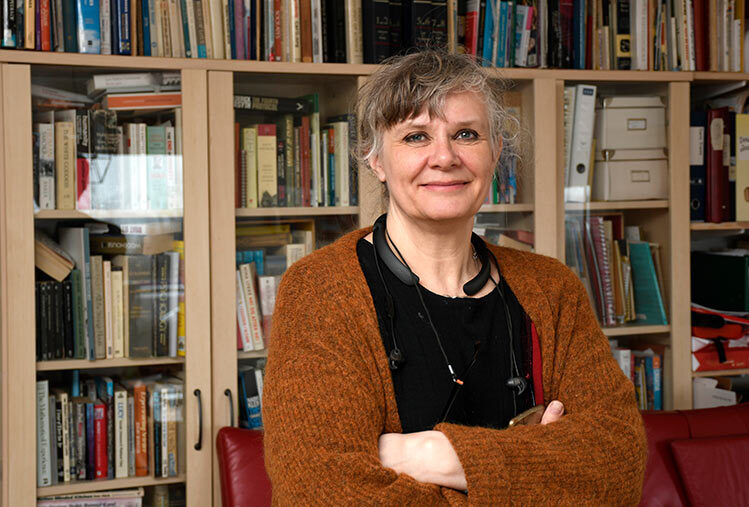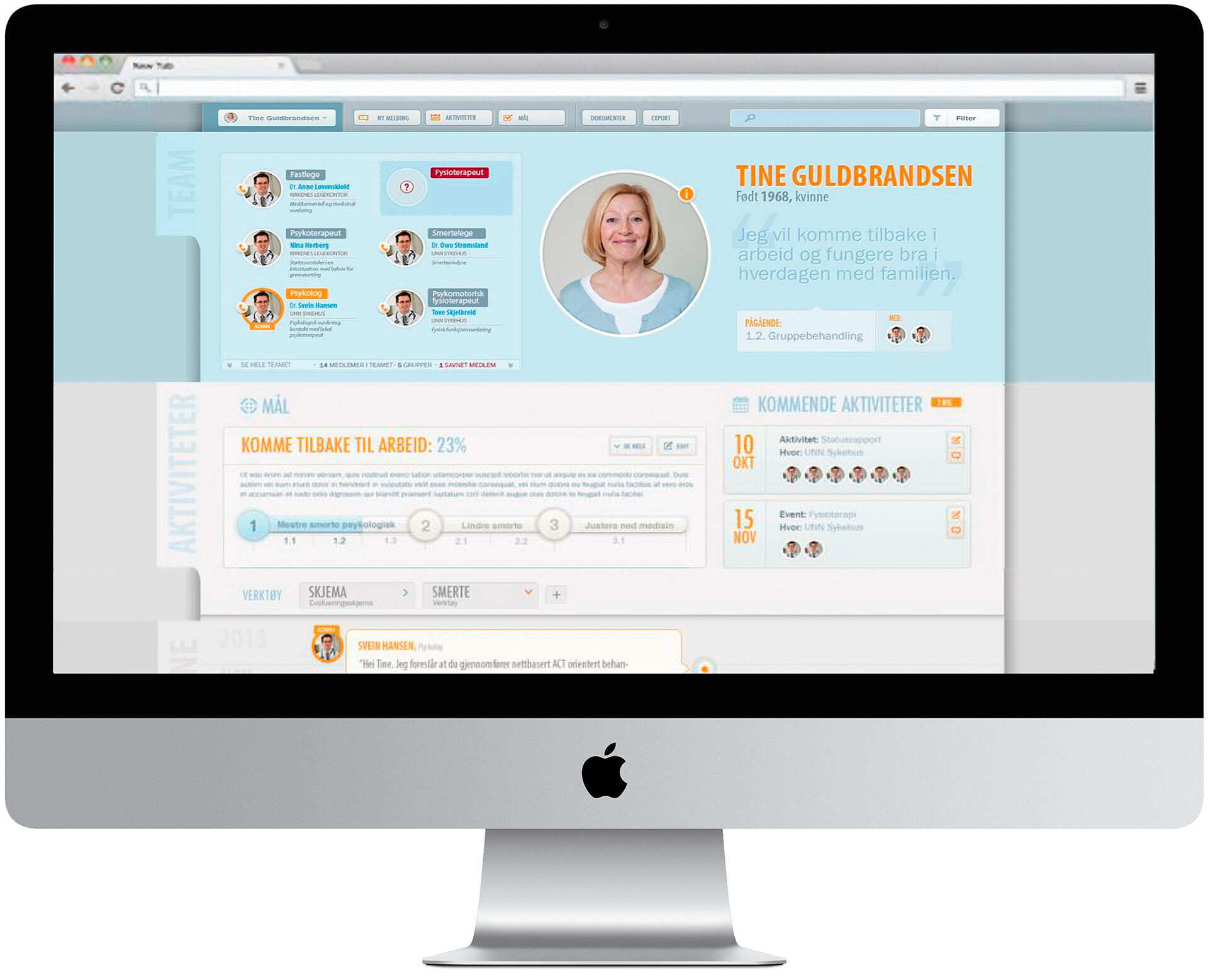Creating e-tools that simplify patients' lives
The Dignity Care research project is working to identify how a digital tool can help patients live a good life, despite illness. Such a tool can make it easier for everyone to collaborate with and around a patient and provide the right help at the right time.

- In short, Dignity Care wants to develop a digital tool that can simplify the patient's life. We want a tool that focuses on the patient's needs, not just the patient's diagnoses, explains Gro Rosvold Berntsen. She is a professor at the Norwegian Center for E-health Research and project manager for Dignity Care and believes that the health service should create the patient pathway together with the patient.
- We envision a tool that gives the patient both good control and easier follow-up of their own illness, for example by gaining insight into and an overview of their own medical records, seeing who is in my team, measuring and registering their own health data, and having easy access to healthcare professionals. At the same time, the tool must make it easy for everyone who delivers services to the patient to collaborate. So that the right measures can more easily be put in place at the right time, she says.
As for the healthcare worker, the e-tool should help them to find each other in the tasks around the patient, and at the same time help them to create a common understanding, joint follow-up, and joint evaluation of the services the patient receives.
Ideal function description
What Dignity Care will end up with through research is an ideal functional description for such an e-tool, which allows the patient and all parties involved in a complex patient pathway to interact easily. Today, there are no digital solutions that can cover all needs in the collaboration around patients with complex or long-term illnesses. Often, it is the patient or their relatives who have a sometimes extensive job of finding out who can help, and then getting the various support measures to work together.
Dignity Care collaborates broadly and involves the research community, patient partners, public bodies, and corporate partners from all over the country.
By "all parties involved in a complex patient pathway", Berntsen means far more than the hospital and the municipal health service.
- If this is to be a tool that makes things easier for the patient, then all helpers and services must be able to use it. We're talking about NAV, PPT, transport services and assistive technology centers, just to name a few. When we have interviewed patients through previous research to map their experiences, they often tell us that they feel they have to navigate in unfamiliar terrain. They find it difficult both to find their way around different services and to access the right help when they need it. Just figuring out who does what can be difficult, especially if you're already tired because you need a lot of help or perform heavy care tasks.
Patient partners
The patient partners in Dignity Care are an important pillar of the research project. These are people who themselves have, or have had, serious and long-term illness or disabilities. There are also parents of children with serious illness or disabilities. What they all have in common is that they have experienced what it is like to live with major extra challenges in everyday life, and how the "bureaucracy" on the side - getting the right help - is often almost as challenging as the illness itself.
One of the patient partners in Dignity Care described being discharged from hospital in this way:
- It felt like being left alone in a small boat on a rough sea. I didn't know where to start or what to ask for. This despite the fact that I have worked in the health service for many years, says Solveig Rostøl Bakken.
- We know from previous research that there are large gaps in the chain of services, and that it is almost as difficult for healthcare workers as it is for patients to find out who should be involved. Navigating the health service is almost a specialty in itself. There is no shortage of people who see that this is wrong. But they're just as resourceful - they don't quite know who can help, or how to activate them. This can lead to major differences in what kind of services are provided in different parts of the country, and how early they are put in place, says Berntsen.
- In this project, we want to facilitate a patient-centered, holistic and proactive service for patients with major and complex needs. We want the services to be at the forefront so that the challenges for the individual are reduced, and that the patient is involved in deciding which challenges need to be prioritized first. The common denominator today is that services are often put in place a little late. In the worst-case scenario, this contributes to new illnesses or new problems," says Berntsen.
Prototype
During the project, a prototype will be created of a digital tool that will give the patient and all their caregivers better opportunities to work together. This will then be tested by healthcare professionals through a randomized controlled trial (RCT), to see if the interaction becomes easier with this prototype compared to the tools they have available today.
During the project period, networking will first take place with patient partners, the health service, and industrial partners to establish a description of what a digital collaboration tool must contain. This will be followed by the development and testing of a prototype, before an RCT is conducted in the target group that will use the tool.
In addition to this work, there are several codes to crack in relation to how privacy and general formal requirements can be met in such a tool. This means that the project wants to be in constant dialog with both those who make the rules and developers of digital tools for the health service.
Helse Nord IKT is the company that operates all the computer systems at hospitals in northern Norway. They are already piloting the Directorate of Health's digital treatment and aftercare plans. In this project, they will help Dignity Care with technical solutions for the RCT study that will test the prototype.
Also participating is Aidn, a company that is developing digital tools for the health service.
Other partners and reference group members include the Norwegian Directorate of Health, Norsk Helsenett, Helse Nord, various patient organizations, DIPS AS, Helseplattformen AS and Tromsø Municipality, to name a few.
